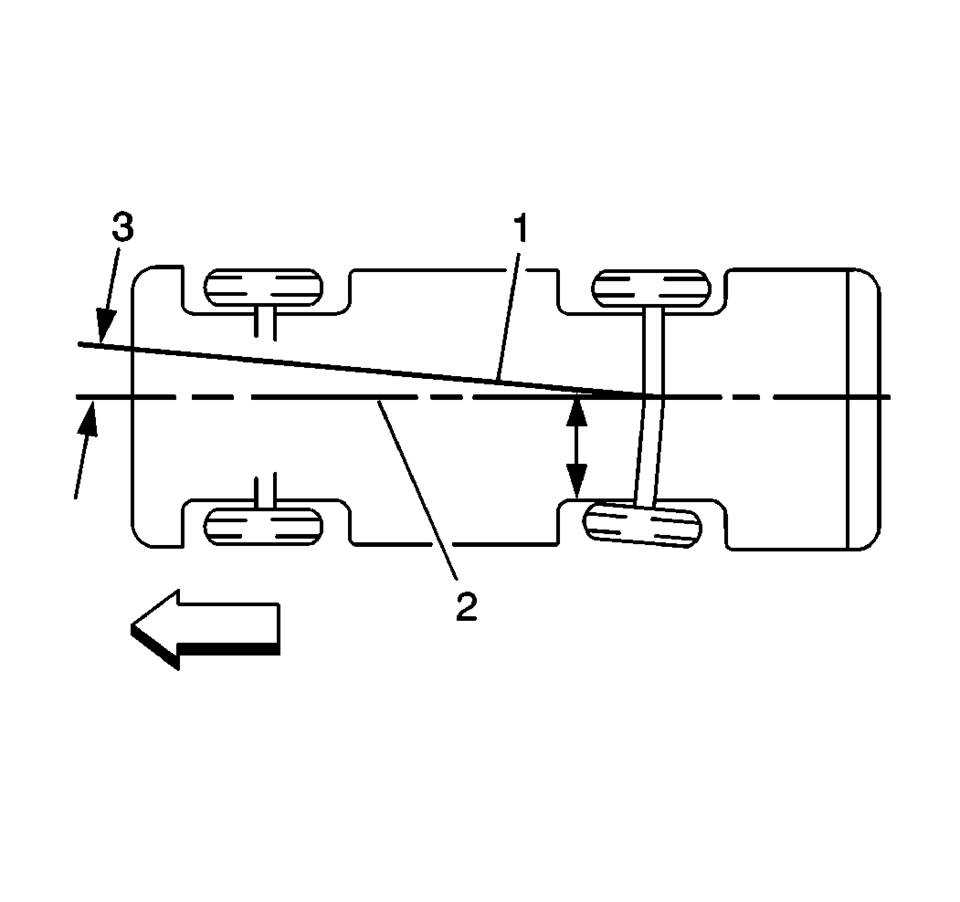Chevrolet Sonic Repair Manual: Thrust Angles Description

The front wheels aim or steer the vehicle. The rear wheels control tracking. This tracking action relates to the thrust angle (3). The thrust angle is the path that the rear wheels take. Ideally, the thrust angle is geometrically aligned with the body centerline (2).
In the illustration, toe-in is shown on the left rear wheel, moving the thrust line (1) off center. The resulting deviation from the centerline is the thrust angle.
If the thrust angle is not set properly the vehicle may “dog track”, the steering wheel may not be centered or it could be perceived as a bent axle. Thrust angle can be checked during a wheel alignment.
Positive thrust angle means the thrust line is pointing to the right hand side (RHS) of the vehicle.
Negative thrust angle means the thrust line is pointing to the left hand side (LHS) of the vehicle.
If the thrust angle is out of specification, moving the axle to body relationship will change the thrust angle reading.
If the vehicle is out in the Positive (+) direction-moving the RHS forward and/or LHS rearward will move the thrust angle towards zero degrees.
If the vehicle is out in the Negative (−) direction-moving the RHS rearward and/or LHS forward will move the thrust angle towards zero degrees.
 Steel Wheel Repair Description
Steel Wheel Repair Description
Caution: Do not heat wheels in an attempt to soften them for straightening
or repair damage from striking curbs, etc. Do not weld wheels. The alloy used
in these wheels is heat-treated and un ...
 Tire Dismounting and Mounting
Tire Dismounting and Mounting
Caution: Use a tire changing machine in order to dismount tires. Do
not use hand tools or tire irons alone in order to remove the tire from the
wheel. Damage to the tire beads or the wheel ri ...
Other materials:
What to Use
Warning
Adding only plain water or some other liquid to the cooling system can be
dangerous. Plain water and other liquids, can boil before the proper coolant mixture
will. The coolant warning system is set for the proper coolant mixture. With plain
water or the wrong mixture, the engine coul ...
Rear End Spoiler Replacement (Hatchback TTV)
Rear End Spoiler Replacement
Callout
Component Name
Preliminary Procedure
Remove the liftgate trim finish panel. Refer to Liftgate Trim Finish
Panel Replacement.
1
Rear End Spoiler Nut (Qty:?€ ...
Rear Side Door Weatherstrip Replacement - Door Side
Rear Side Door Weatherstrip Replacement - Door Side
Callout
Component Name
1
Rear Side Door Weatherstrip
Procedure
Open the front side door to the fully open position.
Remove the front side door check link bo ...
0.006
